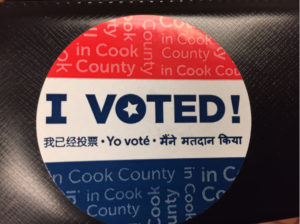Targeting the “perception soft spot”
By Ray Hanania
When you are in the heat of the election campaign, criticism becomes an important tool to distinguish yourself and your assets from your opponent.
Some people call it negative campaigning, but voters expect you to define, in a responsible and reasoned manner, why you are a better choice than the other candidates or candidates. It’s not negative campaigning to point out the faults of others openly and in a responsible manner.
Sometimes though, pointing out the shortcomings of your foe isn’t enough. Sometimes, you have to target the “perception soft spot” of your opponent.
The “perception soft spot” of your opponent is the issue that the public already recognizes as your opponent’s weakness. It doesn’t matter whether the perception is accurate or not. What matters is how the public sees a candidate, your opponent or even yourself. Do they feel your opponent has a flaw? What is that flaw?
You need to identify what that flaw is. And then you need to pile it on.

Sometimes, you have to be careful not to attack the perceived weak spot of an opponent because it could push the audience (the voters) to become sympathetic. It might also give your challenger a base on which to respond and remediate their public image by giving them a chance to defend themselves against your attacks.
But, you can attack without attacking.
A good example might be the belief by the public that their mayor has mishandled the municipality’s finances. Has he (or she) spent too much on a project? Has your opponent failed to fully explain to the satisfaction of the public their policies on spending, budgets or finances.
The public may view your opponent as having a problem with an issue, such as the village’s finances. It’s your job to address that “perception soft spot” and exploit it.
That means gathering all of the facts and evidence to create a message that speaks to the public’s fears or concerns about that issue.
Whether the perception soft spot is correct or not is irrelevant. It’s not your responsibility to defend your opponent. It’s your responsibility to address that perception. You can do that without being negative, or without even engaging in whether or not the perception is accurate or not.
You do that not by attacking your opponent or exaggerating the “perception soft spot,” but rather by defining yourself as someone who can better address finances, budgets and spending.
If they public believes your opponent is bad at managing community financing, regardless of whether it is true or not, then you need to present yourself as an expert at municipal financing and budgets.
In other words, you don’t attack your opponent on the issue of the negative perception that the public has about your challenger by contributing to the criticism. You exploit it by offering yourself as the alternative.
The public’s perception of your opponent is critical in determining how you need to present yourself as being a better choice for them.
Oftentimes the public has many negative perceptions of your opponent, among the many positive perceptions. Your job is to put spotlight on why you are better than your opponent and that often means focussing on your opponents negatives. But you don’t want to look like you are being unfair by hammering on weak issues, even if the public embraces a negative perception on a issue of your opponent.
By identifying the negative perceptions that the public has of your opponent, true or false, and by presenting yourself as better qualified on those issues, you are addressing issues the public is concerned about.


